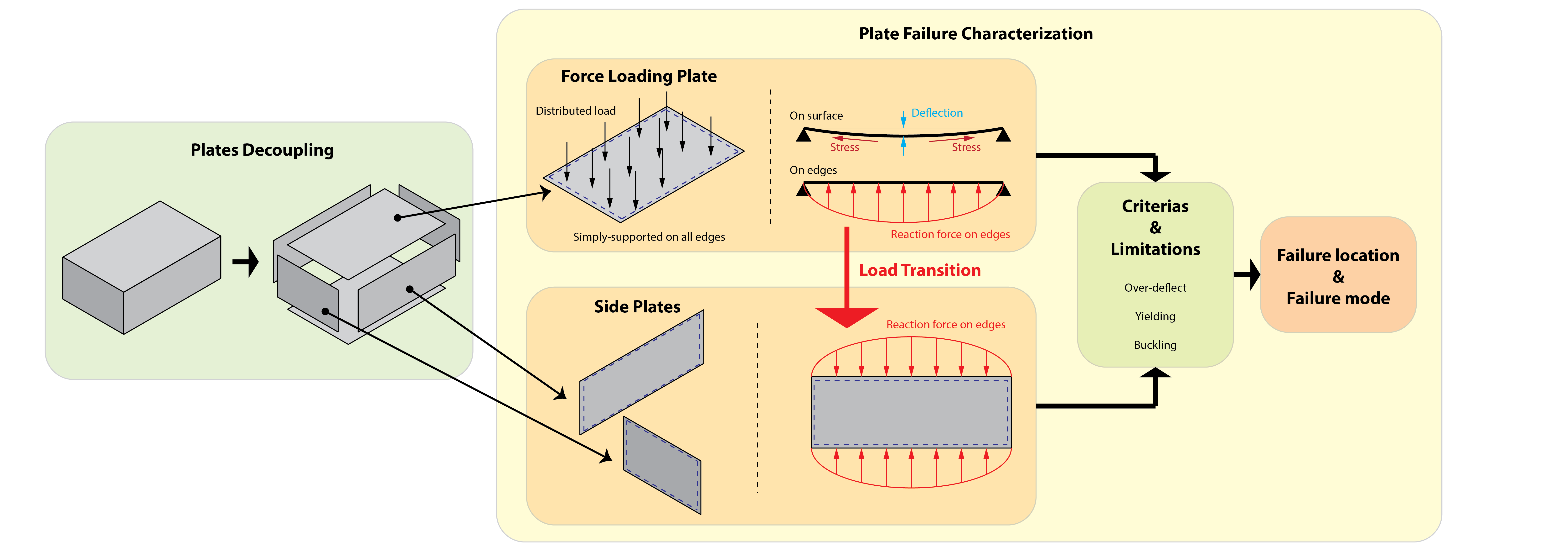Project goal: design toolbox

An example design paradigm (Library #2) is shown below, with all edges simply-supported and distributed load across the entire top surface as an example.

This week I have been searching existing methods/solutions for calculating reaction load on edges of a plate, under different conditions.
The solutions I have found are summarized as follows:
(1) Uniform loading, SSSS support, reaction load on all edges.
(2) Uniform loading, CCCC support, reaction load on all edges.
(3) Variety of distributed loading, CCFF, SSFF, CFFF etc (long edges free), reaction load on all edges. This case can be considered as beam bending with distributed load along short edges.
There are more solutions that can be implemented using the same technique as (2) above, but those cases are not that commonly seen. However, I will leave them here as future reference, in case they are useful:
(1) Supporting conditions (short edge - short edge - long edge - edge): FCCC, SCCC, FCSS, FCFC, CCCC
(2) Loading conditions:
(2.a) Uniform loading over the full/partial height of the plate.
(2.b) Uniform varying load over the full/partial height of the plate.
(2.c) Uniform moment along the shorter edge.
(2.d) Uniform line load the shorter edge.
For other cases, which may or may not have numerical solutions, will be simplified to one of the above cases with assumptions and trade-offs.
I am currently working on Library #1, aka fundamental building components and their decouplings.
